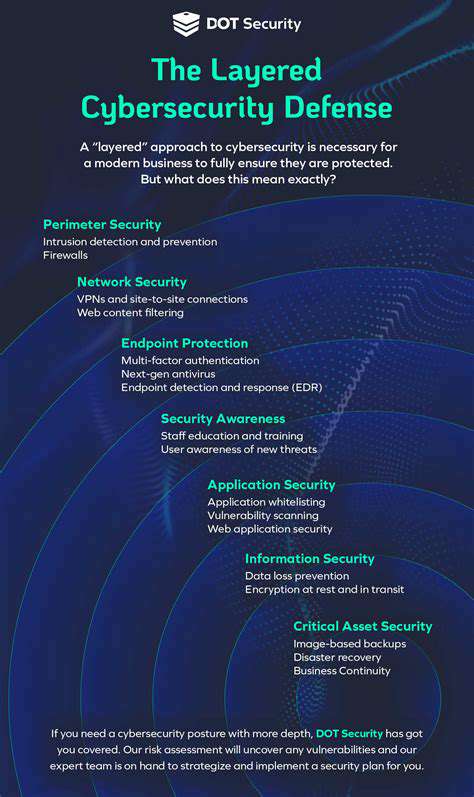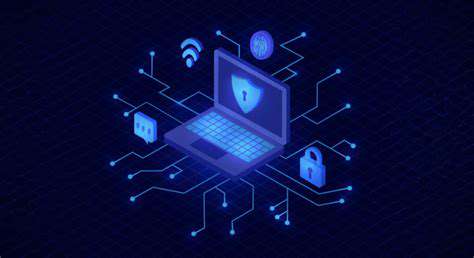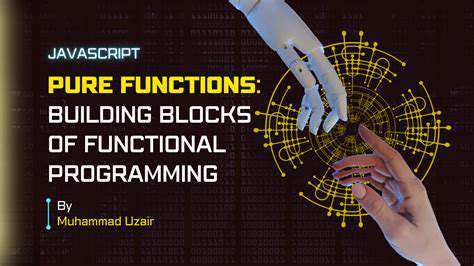How to Identify and Protect Against Zero Day Exploits

Proactive Security Measures: Laying the Foundation
Proactive security measures are crucial for safeguarding sensitive information and systems from potential threats. Implementing these strategies before a breach occurs is far more effective and efficient than reacting to an attack. A proactive approach allows organizations to anticipate vulnerabilities and mitigate risks, thereby minimizing the potential impact of security incidents. This proactive stance also fosters a culture of security awareness and responsibility throughout the organization.
A robust security program requires a comprehensive understanding of potential threats and vulnerabilities. This involves conducting regular security assessments, penetration testing, and vulnerability scanning to identify weak points in the system. Proactive measures also involve developing and implementing security policies and procedures that are clear, concise, and consistently enforced.
Identifying and Assessing Risks
Thorough risk assessment is a cornerstone of proactive security. This involves identifying potential threats, evaluating their likelihood of occurrence, and determining the potential impact on the organization. Analyzing historical data and industry trends can help predict potential threats and vulnerabilities before they materialize.
Implementing Robust Security Controls
Implementing robust security controls is essential for protecting sensitive data and systems. These controls can include firewalls, intrusion detection systems, antivirus software, and data encryption. These security measures act as a barrier against unauthorized access, protecting sensitive information from malicious actors. Implementing multi-factor authentication is vital to strengthen access control and user authentication.
Regularly updating and patching software is also a critical control measure. Software vulnerabilities are often exploited by attackers, and proactive updates help address these vulnerabilities promptly.
Employee Training and Awareness
Employee training and awareness programs are vital components of a proactive security strategy. Employees are often the weakest link in a security chain, so educating them about security best practices is critical. Training should cover topics such as recognizing phishing attempts, safe password practices, and reporting suspicious activities. Consistent training and reinforcement of security awareness are essential to maintain a strong defense against cyber threats.
Monitoring and Response
Continuous monitoring and response are critical for proactive security. Implementing systems to monitor network traffic, user activity, and system logs allows for the early detection of suspicious activity and potential breaches. A well-defined incident response plan ensures that the organization can react effectively and efficiently to any security incidents. Quick and decisive action during a security incident is key to minimizing damage and maintaining business continuity.
Staying Ahead of the Curve: The Importance of Threat Intelligence

Staying Agile in a Dynamic Market
Adaptability is crucial for success in today's rapidly evolving market. Companies that can quickly adjust their strategies and operations in response to changing customer demands and emerging trends are better positioned to thrive. This requires a proactive approach to market research, continuous monitoring of competitor activities, and a willingness to embrace innovation.
Staying ahead of the curve isn't just about reacting to change; it's about anticipating it. By understanding the underlying forces shaping the market, companies can develop strategies that not only meet current needs but also position them for future success.
Investing in Future-Proof Technologies
Embracing cutting-edge technologies is essential for staying competitive. Investing in artificial intelligence, machine learning, and automation can significantly enhance operational efficiency, improve decision-making, and create new revenue streams. These technologies can automate repetitive tasks, streamline workflows, and provide valuable insights into market trends.
Furthermore, companies should explore emerging technologies such as blockchain and the internet of things to gain a competitive advantage and unlock new possibilities.
Cultivating a Culture of Innovation
A culture of innovation fosters creativity and encourages employees to think outside the box. Encouraging experimentation and risk-taking within a supportive environment can lead to groundbreaking ideas and solutions. This involves providing resources, training, and mentorship opportunities to help employees develop their innovative skills.
Companies should actively seek feedback from employees at all levels, and actively implement suggestions to improve processes and products.
Fostering Strong Customer Relationships
Building strong relationships with customers is paramount for long-term success. Excellent customer service, personalized experiences, and proactive communication are key elements in fostering loyalty. Companies should strive to understand their customers' needs and preferences to create products and services that truly meet their expectations.
Data-Driven Decision Making
Leveraging data analytics to inform strategic decisions is crucial for success in today's market. Collecting and analyzing data on customer behavior, market trends, and competitor activities can provide valuable insights, enabling companies to make informed decisions and adjust strategies accordingly. This data-driven approach allows companies to optimize their operations, improve efficiency, and ultimately achieve better results.
Data analysis can also help identify potential risks and opportunities, enabling proactive adjustments to market conditions.
Financial contributions are an essential aspect of many endeavors, from personal projects to large-scale initiatives. They represent a tangible commitment of resources, enabling the execution of plans and the achievement of objectives. A well-structured financial plan can significantly enhance the likelihood of success, allowing for the allocation of funds towards critical needs and facilitating the smooth operation of various processes. This is particularly true in areas like business ventures, where financial backing is often crucial for initial setup, ongoing operations, and expansion.
Implementing and Refining Intrusion Detection and Prevention Systems (IDPS)
Planning and Design
A robust IDPS implementation begins with meticulous planning and design. This phase involves a thorough assessment of the organization's network infrastructure, identifying critical assets, and defining specific security objectives. Careful consideration must be given to the types of threats the organization faces, the potential impact of those threats, and the existing security controls in place. This detailed planning ensures the IDPS is tailored to the organization's unique needs and effectively addresses potential vulnerabilities.
Defining clear threat models and potential attack vectors is crucial. This involves understanding the attack surface and identifying potential points of compromise. Furthermore, the selection of appropriate detection and prevention technologies needs to be aligned with the organization's budget, technical expertise, and the specific threats it faces. This stage lays the foundation for a successful and effective IDPS.
Technology Selection and Integration
Choosing the right IDPS technology is paramount. Factors to consider include the type of threats the system needs to detect (e.g., network-based, host-based, application-based), the scalability requirements for future growth, and the integration capabilities with existing security infrastructure. A thorough evaluation of different vendors and their solutions is essential to ensure the chosen technology aligns with the organization's needs.
Implementing the chosen IDPS technology seamlessly into the existing network infrastructure is critical. This includes configuring the system to monitor relevant traffic, setting up alerts, and integrating with existing security information and event management (SIEM) systems. Careful consideration must be given to minimizing disruption to normal operations during the integration process. Thorough testing is essential before deployment to ensure the system functions as expected.
Deployment and Configuration
Deployment of the IDPS should follow a phased approach, minimizing disruption to network operations. This often involves pilot deployments in less critical environments to test and refine configurations before full deployment. Careful configuration is vital, ensuring accurate detection rules and appropriate thresholds for alerts. Thorough documentation of the deployment process and configurations is essential for future maintenance and troubleshooting.
Continuous Monitoring and Tuning
An effective IDPS requires continuous monitoring and ongoing refinement. Regular analysis of logs and alerts is crucial to identify false positives and ensure the system's accuracy. Adjustments to detection rules and thresholds should be made based on the evolving threat landscape and observed network activity. This iterative process ensures the IDPS remains effective in mitigating emerging threats.
Security Operations and Response
Establishing clear procedures for incident response and handling alerts generated by the IDPS is essential. This includes defining roles and responsibilities for incident handling teams, outlining escalation paths, and ensuring timely response to potential security breaches. Effective communication channels between security teams and other departments are critical for a unified approach to security.
Training and Awareness
User training and awareness programs are critical components of a successful IDPS implementation. Employees must understand their roles in maintaining network security and the importance of reporting suspicious activity. Regular training sessions can help educate employees about threats, best practices, and the importance of adhering to security policies. This proactive approach empowers users to become active participants in the overall security posture of the organization.
Regular Evaluation and Improvement
Regular evaluation of the IDPS's performance is essential to identify areas for improvement. This includes reviewing detection rates, false positive rates, response times, and the effectiveness of implemented changes. Regular audits and penetration testing can help in identifying vulnerabilities and gaps in the system's design. This ongoing evaluation cycle allows for continuous refinement and improvement of the IDPS, ensuring its effectiveness in the ever-evolving threat landscape.
Read more about How to Identify and Protect Against Zero Day Exploits
Hot Recommendations
- Review: The New [Specific Brand] Smart Lock Is It Secure?
- Best Budget Studio Monitors for Music Production
- Top Flight Simulation Peripherals (Joysticks, Throttles, etc.)
- Top Portable Scanners for Document Management On the Go
- Reviewing the Latest Smart Air Purifiers for Your Home
- Best Portable Photo Printers for Travelers and Memory Keepers
- The Future of Personal Transportation Beyond Cars (Hyperloop, eVTOL)
- Top Network Monitoring Tools [Free & Paid Options]
- Understanding the Tech Behind mRNA Vaccines [A Look Inside]
- Guide to Choosing the Right Gaming Chair for Ergonomics








![Best Free Stock Video Sites You Can Use [2025]](/static/images/25/2025-06/FindingtheRightSiteforYourNeeds.jpg)
![How to Write Effective Unit Tests in [Language, e.g., JavaScript]](/static/images/25/2025-07/TheImportanceofUnitTestinginJavaScriptDevelopment.jpg)

![Best Accounting Software for Freelancers [Simplify Your Finances]](/static/images/25/2025-07/MakingtheRightChoiceforYourFreelanceBusiness.jpg)